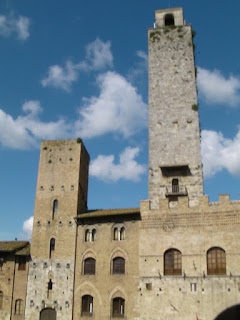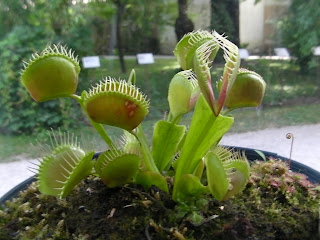So this morning I got up and had my leisurely morning, since 11 pa naman the audience. By 9, I was on my way to St. Peter's where I would just chill until the hour arrives. Not surprisingly, the square was already half full, despite the blazing sun. The area closest to the pope, which is a large area, is sealed off for those who secure tickets beforehand. So I was standing about 100 meters away from the from of St. Peter's Basilica.

The faithful all gathered at St. Peter's

A leftover poster from the beatification
The amount of people gathered there was pretty amazing. I didn't have a good way if estimating exactly how many though. The atmosphere was a bit restless because of all the crowding and the intense heat. At about 10:30 though, a band starting playing some music and the people began to cheer. On the flanks of the square, two giant screened showed the pope coming out on his little white car. Then he would ride through a snaking path that brings him quite close to most of the crowd. It was electric being there. Everyone was cheering and clapping. Of course all the cameras and video cameras were in the air. Because of the snaking path, the pope passed within 5 meters of me! That was very cool.

Here he is from afar... I have a video though!
When he finally gets to his chair, a simple ceremony begins. It's essentially a reading, a reflection, greeting and blessing. However, it took an hour and a half to finish! That's because it would happen in 7 languages. First Italian, the. French, English, German, Spanish, then I think Portuguese and Polish. It was nice to see all the pilgrims from all over the world coming together. And of course there was a Filipino group.

The AWESOME looking guards













































